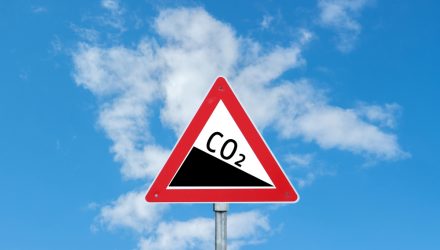While a lot of the climate change debate has been around identifying the problem, the solutions are what will drive investor returns. Carbon pricing has emerged as a critical development that could help support responsible investing and incentivize global change. But how do investors access this rapidly growing marketplace?
In the upcoming webcast, Carbon Allowances: An Asset Class That’s Good for the Planet and Your Portfolio, Luke Oliver, managing director and head of strategy at KraneShares; Eron Bloomgarden, partner at Climate Finance Partners; and Fritz Folts, managing partner and chief investment strategist at 3EDGE Asset Management, will explain the ins and outs of the global carbon markets and how you can gain access to this historically inaccessible market for your clients’ portfolios.
As a way to gain exposure to this growing opportunity, the KraneShares Global Carbon ETF (KRBN) can help investors access the carbon allowances futures market.
KRBN tries to reflect the performance of the IHS Markit’s Global Carbon Index, which offers broad coverage of cap-and-trade carbon allowances by tracking the most-traded carbon credit futures contracts. The index introduces a measure for hedging risk and going long for carbon prices while supporting responsible investing. Currently, the index covers the major European and North American cap-and-trade programs: European Union Allowances (EUA), California Carbon Allowances (CCA), and the Regional Greenhouse Gas Initiative (RGGI).
KraneShares also recently came out with two new carbon markets-related ETFs: the KraneShares European Carbon Allowance ETF (KEUA) and the KraneShares California Carbon Allowance ETF (KCCA).
KEUA offers exposure to the European Union Allowances cap-and-trade carbon allowance program only and is actively managed.
The fund’s benchmark is the IHS Markit Carbon EUA Index, an index that tracks the most-traded EUA futures contracts, a market that is the oldest and most liquid for carbon allowances. The market currently offers coverage for roughly 40% of all emissions from the EU, including 27 member states as well as Norway, Iceland, and Liechtenstein. The annual cap reduction was recently increased from 2.2% to 4.2% in an attempt to meet long-term carbon emission targets.
KCCA offers exposure to the California Carbon Allowances cap-and-trade carbon allowance program only and is actively managed.
The fund’s benchmark is the HIS Markit Carbon CCA Index, an index tracks the most-traded CCA futures contracts, a market that encompasses roughly 80% of California’s greenhouse gas emissions and has also covered Quebec’s emissions since it expanded in 2014. The cap is currently set to decrease by 4% every year to meet future targeted carbon emissions levels, and it has a built-in floor price that raises 5% plus an inflation adjustment yearly.
As both of the new funds are actively managed, they may invest in carbon credit futures that have different maturity dates, or weight futures differently than the index. The funds potentially trade in CTFC-regulated futures and swap above the CFTC 4.5 limit and are therefore considered a “commodity pool.”
Financial advisors who are interested in learning more about the carbon market can register for the Wednesday, October 13 webcast here.

